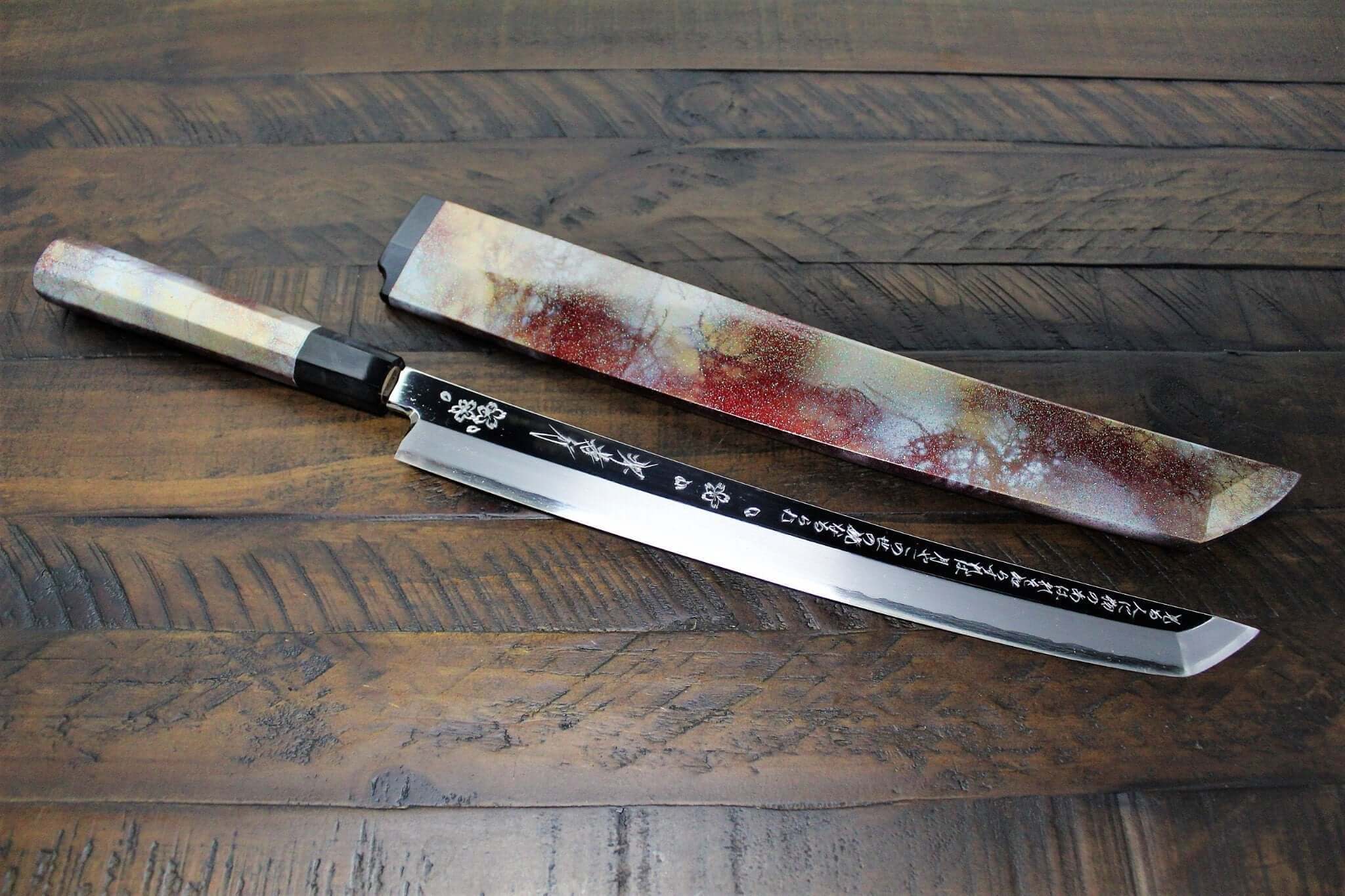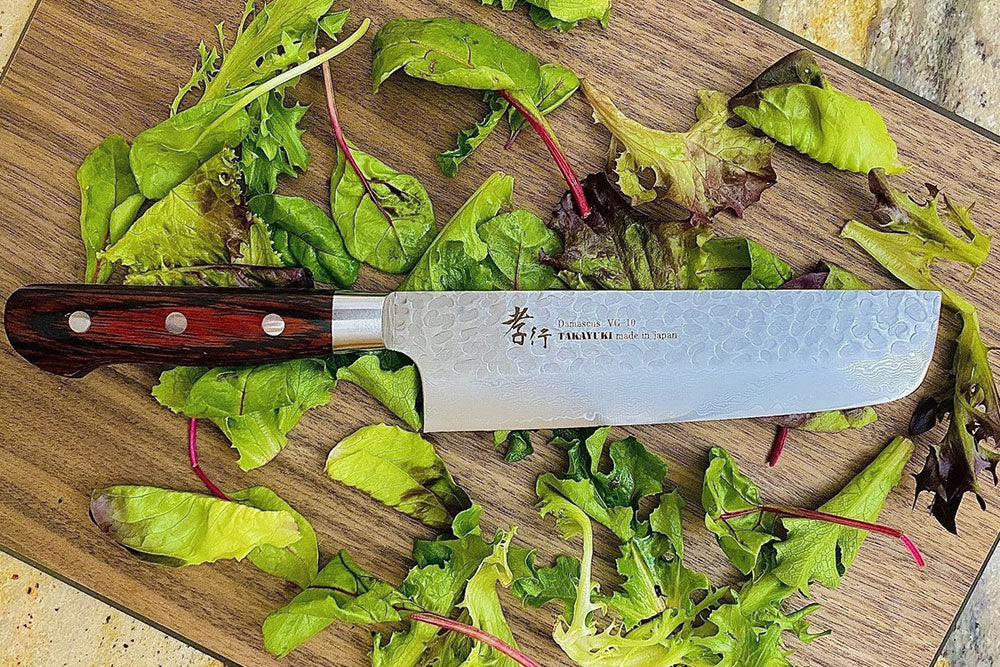
How to Choose a Japanese Sushi Knife: A Guide for Culinary Enthusiasts
Sushi is an art form that requires precision, skill, and the right tools. Central to this art is the sushi knife, a specialized instrument designed to slice fish and other ingredients with surgical precision. Whether you're a professional chef or a home cook looking to elevate your sushi-making skills, selecting the right Japanese sushi knife is crucial. Here is a comprehensive guide to help you choose the perfect sushi knife.
Understanding the Different Types of Sushi Knives
Japanese sushi knives come in various types, each designed for specific tasks. Here are the main types:
-
Yanagiba: This is the most common single-bevel sushi knife, known for its long, thin blade. It is ideal for slicing raw fish and making sashimi due to its single-bevel edge, which allows for cleaner cuts.

-
Sujihiki: Ideal for slicing fish fillets, sushi, and sashimi. Its versatility also extends to carving large roasts, such as top sirloin, tri-tip, and poultry. The Sujihiki’s double-bevel and relatively long blade allows for smooth, uninterrupted cuts, which are essential for preserving the meat's texture.

-
Kiritsuke: The Kiritsuke is a versatile double-bevel knife, similar to a Gyuto chef knife, and is often used for chopping vegetables and slicing sashimi. As one of the few truly multipurpose traditional Japanese chef knives, it makes a valuable addition to any home or professional kitchen.

-
Deba: A heavy-duty knife single-bevel used for filleting fish and cutting through small bones. It is robust and can handle tougher tasks compared to the Yanagiba.

-
Usuba: A vegetable knife with a straight edge, perfect for cutting vegetables with precision. It is a single-bevel knife, offering control and sharpness.

-
Takohiki: Like the Yanagiba but with a rectangular single-bevel blade, it’s often used in the Kansai region for preparing octopus and other sashimi.

Key Factors to Consider When Choosing a Sushi Knife
When selecting a sushi knife, several factors should guide your decision:
- Blade Material:
- High-Carbon Steel: Known for its sharpness and edge retention. However, it requires more maintenance to prevent rust.
- Stainless Steel: Easier to maintain and resistant to rust, though it might not hold an edge as long as high-carbon steel. There are a wide variety of stainless-steel variants, each with its own unique properties.
- Composite Blades: Combine the best of both worlds, offering a sharp edge with better rust resistance. Looking to materials such as powder stainless steel, also known as high-speed stainless steel is one of these types of materials. While there are a lot of positives to these materials, one of the main drawbacks is that the material is so hard that it is harder to sharpen as well.
- Blade Edge:
- Single-Bevel: Common in traditional Japanese knives, it allows for incredibly sharp edges and precise cuts. However, they are either right-handed or left-handed, not ambidextrous and require more skill to use and maintain.
- Double-Bevel: Easier to use and sharpen, suitable for both left and right-handed users. They are versatile and can be used for various tasks beyond sushi.
- Handle:
- Western Handle: Often more ergonomic and familiar to those used to Western-style knives. Slightly heavier in the handle due to the full tang design.
- Japanese Handle (Wa-Handle): Lighter due to the partial tang design and offers a traditional feel, providing a balance that many sushi chefs prefer.
- Length:
- Choose a length that matches your skill level and comfort. A common length for Yanagiba knives is between 210mm to 300mm. Try not to go too short as slicing back and forth damages the sushi, ideally, the slice is one single motion.
- Weight:
- Heavier knives like Deba are suited for tasks requiring more force, while lighter knives like Yanagiba allow for delicate slicing. The Deba, with its incredibly thick spine, is designed to do the work for you when breaking down a fish.
Maintenance and Care
Proper maintenance is crucial for the longevity and performance of your sushi knife:
- Sharpening: Regular sharpening with a whetstone is essential, especially for high-carbon steel blades. Learn the correct angle and technique to maintain the knife’s edge. If you don’t feel comfortable with doing this yourself many professional knife sharpening services are available.
- Cleaning: Hand wash your knife with mild soap and water immediately after use. Avoid the dishwasher as it can damage the blade. Removing standing water prevents discoloration and rust, in particular on high-carbon knives.
- Storage: Store your knife in a protective sheath or on a magnetic strip to prevent dulling and damage. Avoiding metal-on-metal contact as well as prolonged moisture exposure preserves the knife's integrity. For periods when the knife is not going to be used for an extended amount of time, applying a light layer of Camelia oil or edible mineral oil protects the blade from corrosion.
Recommendations
Here are some reputable brands known for their quality sushi knives:
- Sakai Takayuki: With an extensive collection they are renowned for their high-quality Yanagiba knives, used by many professional sushi chefs.
- Isamitsu: Offers hand-forged Kiritsuke which is a multipurpose chef’s knife traditionally used by the head chef in a restaurant.
- Sawakazuma: Known for its innovative design and balanced feel, suitable for both professional and home cooks.
Conclusion
Choosing the right Japanese sushi knife is a personal journey that depends on your cooking style, experience, and preferences. By understanding the different types of sushi knives and considering factors like blade material, edge, handle, length, and weight, you can find the perfect tool to enhance your sushi-making experience. Invest in a quality knife, take good care of it, and enjoy the art of sushi with precision and finesse. Happy slicing!


